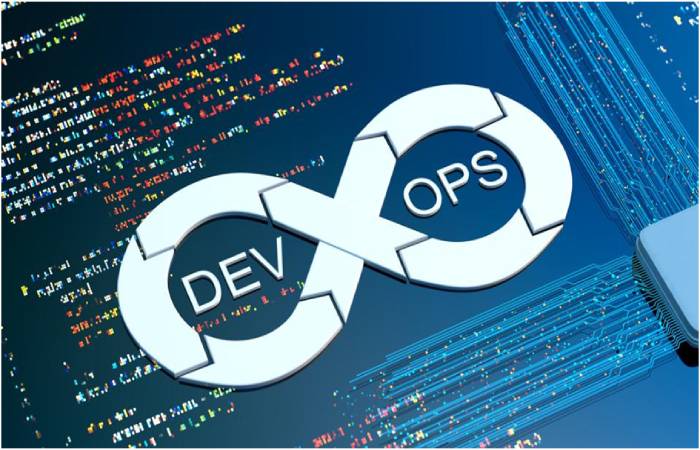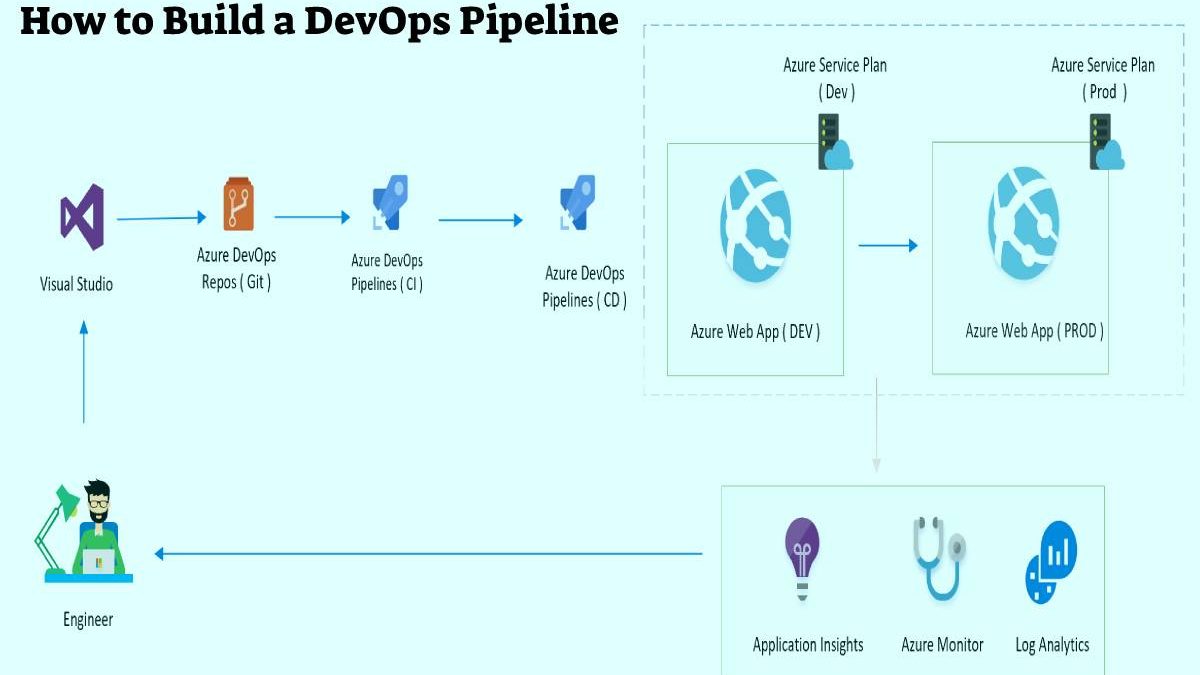Launching a SaaS product or a new application in today’s hyper-competitive tech world is just the beginning of a path that never ends to build and deploy code. Modern digital users have less patience and loyalty, when an application or SaaS product fails to meet their needs, they will quickly transfer to a contender.
That’s why teams of development all over the globe are continually releasing new updates, patches, and features. Before distributing upgrades to the product for every end-user, operations staff had their full hands ensuring that a new code functions properly. If this procedure isn’t handled properly, it might lead to more issues as well as downtime, which users hate.

Most software businesses must be acquainted with DevOps — the term developed by combining the words of “development” and the “operations”— and must be taking the benefit of the huge merits that come with bringing these previously separated departments together. When operations and development teams collaborate in a DevOps model, code is tested and delivered faster, and user data-driven ideas for new traits and fixes are regularly injected into the cycle of development. The path which every new code follows is known as a DevOps pipeline, and it runs from planning to deployment and monitoring. Now the aspirants can gain the expert knowledge and skills of DevOps available from any online centers across India like DevOps Training in Hyderabad. This enables the aspirants in mastering the practical skills of deployment, configuration, and integration management.
Table of Contents
Understanding DevOps Pipeline
The software engineering team uses a DevOps pipeline, which is a combination of automated processes and tools for compiling, building, and deploying code. Developing an efficient DevOps pipeline allows businesses to continuously build, test, and deploy the new code. The primary goal of a DevOps pipeline process is to automate the delivery of software, removing the necessity for manual modifications at every stage. Manual effort is time-saving and prone to human error, causing deployments to be delayed. The transition from manual to automated updates not only reduces glitches but also helps engineers to produce high-quality code more quickly compared to the past.
A DevOps Pipeline’s Components
Firms can construct a personalized DevOps pipeline using various methodologies and tools. The components of a common pipeline enable continuous delivery, ensuring that code flows smoothly from one step to the next while automating the process and reducing manual work.
- CI/CD – Continuous Integration/Continous Delivery is one of the DevOps pipelines’ cornerstones, which enables the rapid incorporation of new code. Continuous Integration/Continuous Delivery allows several developers to quickly integrate tiny portions of new code into the shared repository. Continuous integration also lets you test your code for glitches automatically, allowing you to catch bugs early and resolve them more easily. CD is a CI add-on that allows developers to run additional tests, including user interface tests, to assure bug-free deployment. Additionally, CD assists the team of DevOps in delivering bug fixes, increasing the new feature frequency releases, and automating the whole software release process. These characteristics help to cut down on project costs and time.
- CT (Continuous Testing) – Companies can use CT to do test automation at any phase during the development processing. A Continuous Testing strategy enables rapid assessments of code integration release risks. Once the code has been incorporated, the tests start running automatically.
- Continuous Deployment – The terms “continuous deployment” and “continuous delivery” are frequently interchanged, however, the two are not compatible. The whole release cycle will be automated at this level, and coding updates are delivered directly to an end-user without the need for manual involvement. The disadvantage of deployments that are automated is that when issues are not spotted along the route, they may be deployed, potentially causing the application to fail. Only nominal code updates should be deployed continuously. You can undo the changes in the worst cases. The benefit of continuous deployment is that it allows for regular deployments in one day.
- Continuous Monitoring – It allows for the early detection of security risks and compliance issues, providing SecOps (a term that combines the words “security” and the “operations”) team members with real-time data over a company’s IT infrastructure and supporting vital security processes such as analyzing the root cause, incident response, threat intelligence, and forensics.
- Continuous Feedback – After the code has been successfully deployed, constant feedback is used to assess the release’s impact on end-users. The organization gains insights and information on how people are reacting to the new build by automating feedback. If serious concerns are uncovered, development teams will be contacted and can begin bug solutions right away.
- Continuous Operations – Continuous operations focus on decreasing or eliminating the requirement for scheduled downtime, resulting in little disruption to end-users. Configuring continuous operations is an expensive endeavor, but it might be worth the additional cost considering its benefits.
Developing a DevOps Pipeline
Firms use various approaches and tools to create unique and effective DevOps pipelines that are tailored to their requirements. Establishing a CI/CD tool, locating a controlled environment, configuring a build server, configuring build automation tools to test, and deploying for production are all common steps.
Step 1: Establishing a Continuous Integration/Continuous Deployment Tool
For the firms which are getting established developing a DevOps pipeline, the initial order of enterprise is to select a Continuous Integration/Continuous Deployment tool. Every firm has various requirements and essentials, so each tool would not be correct for every circumstance. Jenkins is among the most widely used CI/CD tools, even though there are many others. Jenkins could be easily configured to operate well for various applications due to hundreds of community-contributed tools and plugins.
Step 2: Sourcing a Controlling Environment
Large teams of development require a dedicated location to retain and distribute constantly changing code, avoiding merge conflicts and quickly generating various versions of a software or an application. Source controlling management technologies like Git enable successful collaboration among members of teams from all over the world by storing code in a distinct shared repository for each developer. Other prevalent management tools for source control include GitLab and BitBucket.
Step 3. Configuring a Build Server
Configuring a build server, also known as a CI server, is a necessary step before your project could proceed further down the pipeline. The build server is a dependable, stable, and centralized environment for developing distributed projects. Integrated code is retrieved from source code repositories by building servers, serves as a point of integration for every developer, and provides a clean environment in which to ensure that the code works.
Firms, like the other tools described above, can select from a variety of building servers, each with its own set of functionality. Jenkins is the most often used to build a management system. The go.cd, TeamCity, and Travis-CI are some of the other included solutions.
Step 4. Configure or Create Testing Automation Tools
It’s time to test the code once it’s been set up on a build server. Developers execute automated tests throughout the testing process to verify that only code free from error makes it to the deployment phase. At the testing stage, several test automation is run, including unit, regression, integration, and functional tests. The majority of tests are executed through CI successively.
TestComplete is an excellent option to start when it comes to executing tests. It includes a plugin of Jenkins that allows you for running tests in a Project Jenkins Pipeline with additional features like preserving the history of tests and viewing results straight from Jenkins.
Step 5. Deploying to Production
Deployment is the last phase of your pipeline where your application is ready to get directed for production. Setting up your build server, like Jenkins, to execute a script for deploying your application is the simplest way to deploy the code. You can either configure it by running it automatically or performing it manually. Only utilize automatic deployment when you are certain that no bad code will make it into production. This can be linked to your testing builds such that only script executes if all of the tests are passed.
Are You Ready To Build A DevOps Pipeline?
We’ve gone through the major components and tools for putting together an efficient DevOps pipeline, and also the procedures for doing so. A robust pipeline can assist enterprises of every size in ensuring that their code is released to the public in a controlled and predictable manner, reducing glitches and time to deploy. PagerDuty collaborates with a few of the world’s most advanced technology firms to assist them to build effective and modern DevOps pipelines that meet their monitoring and deployment objectives.
Conclusion:
With this, we have completed learning to build a DevOps pipeline. We have successfully comprehended the definition of DevOps Pipeline and its components. The steps which are required to build a DevOps pipeline are explained in detail. We hope now you have gained the capable knowledge for building a DevOps pipeline with your objectives.

